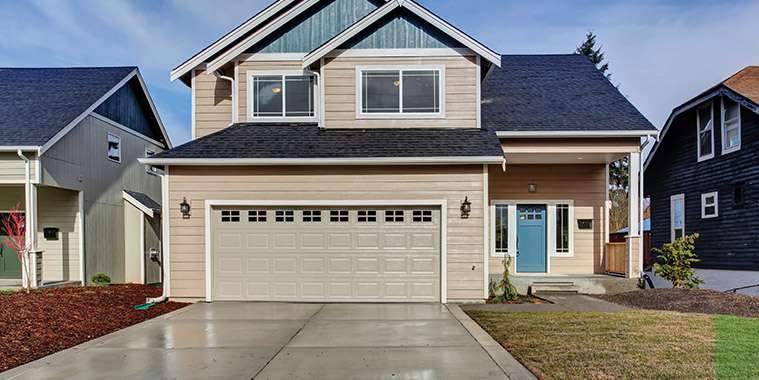So you’ve decided to buy a new home. This may be the most important decision and investment you’ll make in your lifetime and you might be feeling just a little bit stressed.
New Home Warranty Program of Manitoba Inc. (MBNHWP) can help. By asking the right questions and following the right steps, you’ll become more focused and enter your journey of new home ownership on a positive note.
Research your finances
Before you walk out your door to begin looking at show homes, take a close look at your financial position. Begin by asking a few questions:
• How much can you comfortably spend each month on a mortgage, property taxes, and utilities?
• How much will you spend on decorating and furnishing?
• Do you have any financial debt?
• Are there any upcoming financial obligations to consider like a new car?
• Will there be any anticipated changes in income in the future?
Choose a builder
Choosing the right builder may be as important as choosing your home. Look for a builder that you feel comfortable with. Do research. Keep in mind that many lending institutions insist that your mortgage be taken out on a home built by a member of a warranty program.
Take your time meeting with builders. Here are some questions to start with:
• Do you belong to the New Home Warranty Program of Manitoba?
• Where to you usually build?
• Do you have any Show Homes we can visit?
• Can you meet our specifications within our budget?
• When could you begin construction, and how long will it take to finish?
• What if we want to make changes during construction?
Arrange your mortgage
Not all lending institutions are the same. You’ll want to take into consideration interest rates, your past history with that institution, access, and the type of mortgage they’re willing to provide to you.
Establish a relationship
You will now want to begin serious negotiations with your builder. Don’t let this get in the way of forming a positive working relationship. If you have problems in the future, you want to be on good terms with your builder. Take your time to get to know and understand this person/company — their building methods, design types, materials used, building standards, and the other people who will be involved in this project.
Choosing the right home
Be specific about what you want your new home to look like, feel like and operate like. A home should be both functional and comfortable. Discuss this with all members of your household. Start by the builder’s show homes and looking over his/her building designs. Keep in mind all future considerations, such as additions to your family. Here are some other things to consider:
• Number and size of bathrooms & bedrooms and storeys
• Storage/closet space
• Attached or detached garage
• Do you want a fireplace? Jacuzzi?
• Extra rooms for an office, den, library, sitting room, etc.
• Patio/sunroom/deck
• Types of appliances
• Materials used in construction
Note that while choosing the components of your home, keep in mind that not everything will be covered under warranty.
Making the purchase
You’ve now decided on the specifics of your new home and are ready to sign on the dotted line. Read the contract thoroughly and question anything that isn’t clear. Remember, no question is too small! Don’t feel awkward about taking your contract to a lawyer for clarification.
It’s important that you’re satisfied with every detail. When you sign your contract you are forming a legally binding agreement between you and your builder. So what happens if later on you change your mind about something? You should ask your builder this question long before your contract is drawn up.
Typically, a builder will draw from the funds you’ve set aside for each phase of the construction. In other words, you are paying only for work done and materials used as the construction progresses. However, it’s standard practice for a builder to ask for a deposit before beginning construction of your home, as a means of binding your agreement.
The New Home Warranty Program offers protection on your deposit if your builder is a member of the program. In the event that a builder cancels construction, or goes bankrupt before completing your home, or commits fraud, our program offers deposit coverage up to a maximum of $25,000.
Construction begins
Keep in touch with your builder, but don’t interfere with construction. If you made an informed and confident decision in the beginning when choosing your builder, choosing your home, and defining the specifics of your contract, you should feel confident that your builder will meet your expectations. However, this doesn’t mean you shouldn’t remain involved to some degree.
Your builder will set out specific dates after each phase of construction when you can meet to view the home. With your builder present, you can ask questions. If you opted to choose a builder from our warranty program, you can rest assured that any warranty item not met with during construction will be resolved following possession.
Taking possession
Prior to possession, your builder will arrange a date and time for your “walk-through”. This is your opportunity to inspect your new home, to ensure that the details of your contract have been met. If you have established a good relationship with your builder, you should feel comfortable pointing out any items that you question or disagree with. At this time, you and your builder will compile a list of these unfinished items or corrections to be made, with an estimated time of completion. Be thorough in your inspection, and honest with your builder.
At this time you will also sign any closing papers, of which will include the deficiency list, and your Certificate of Possession and New Home Warranty.
Be sure that all information on your certificate is filled in correctly, especially your date of possession. Finally, make sure both you and your builder have signed and dated at the bottom. It’s a good idea to make a copy of your certificate immediately and then place the original in a safe place. Once we have received our copy, we will send you an informational package by mail. This may take up to three weeks.
If you decide to eventually sell your home, you’ll want to include your certificate in the sale.
First Year of Ownership
Within the first year you own your new home, it is not uncommon for you to encounter some minor problems. For example, a house will go through a period of shifting and settling causing minor cracks to appear here and there.
Your builder will most likely explain to you that this is quite normal. This is the most common concern among new homeowners. Please be advised that this is considered a ‘maintenance item’ and is not covered under your warranty. Most builders will go in and repair these minor cracks and nail pops within the first year — but are not obligated to do so.
During your first year of ownership, keep track of any deficiencies you encounter. Your builder will most likely do a final inspection a couple months prior to your one year anniversary.
Remember, if you had your home built by one of our builder members and you signed a Certificate of Possession, you must make any warranty claims in writing to the program prior to your one year anniversary of possession. Visit our website at mbnhwp.com for more information.
— mbnhwp.com



